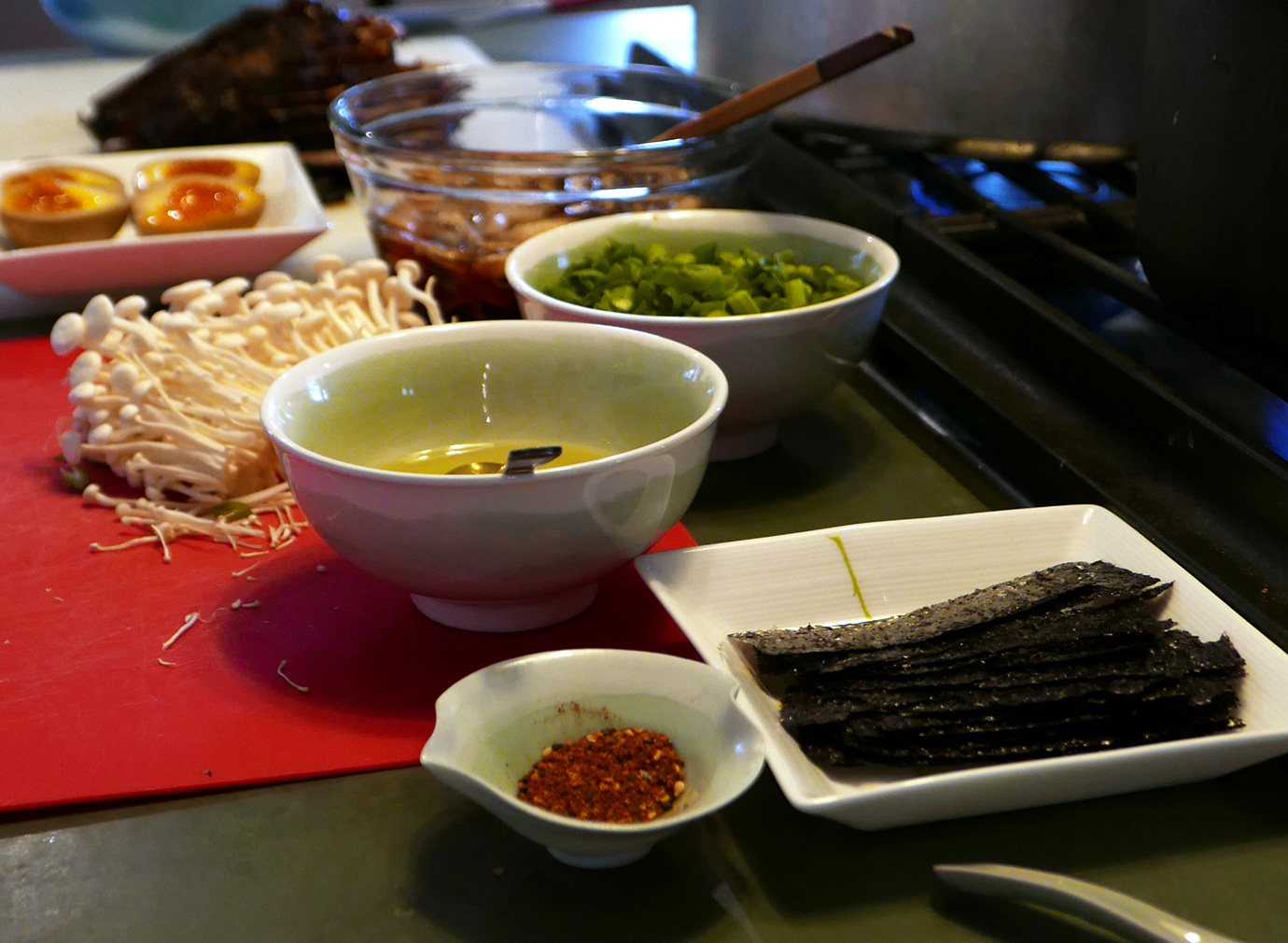Contrary to most people’s experience with cooking ramen, it is a surprisingly involved and time consuming process, completely removed from the popular instant ramen varieties found at supermarkets. There is a broth to be made over eighteen to twenty-four hours, a tare to add flavor, toppings to be sussed out, and a frazzled dash at the very end to put it all together. Each of these stages has its pitfalls, and each component can be obsessed over should you find a part in which you are seriously invested. Some desire to make a perfectly clear or white soup, while others fixate on the tenderness and taste of their chashu. I’m in the category of the ajitsuke tamago (seasoned egg) engrossed, and enjoy experimenting with marinades and cooking times.
All of this may seem overwhelming to the newly indoctrinated ramen maker. Sure, the broth may take hours to create, but it is largely unattended time that can be spent in other ways (egg marinating!). Yes, there are many steps and pieces to consider, but nothing requires an exhaustive amount of culinary expertise. Each component in itself… broth, tare, toppings, and noodle preparation is straightforward. Most elements of the dish can and should be made days ahead of time to allow the flavors to mingle and enhance, as they are in ramen-ya (ramen shops in Japan). The fast food element is the haste of final assembly and the speed Japanese shop owners want you in and out.
After days of preparation, I’ve had bowls ruined in the final thirty seconds. The stressful part of making ramen is the finale, when all of the ingredients are coming together into one umami-infused, lip-smacking, noodle-chewing bowl of savory delight. This is where all the hours spent on broths, eggs, chashu, oils, mushrooms, etc., can make or break your ramen. Ramen noodles don’t like to laze around in a broth, as they get sad and soft, and the soup is best when served piping hot and garnished aesthetically but quickly. When it all works, however, the reward for your hours of work while smelling an amazingly rich soup on the simmer is that very first salty slurp of tongue-coating deliciousness called ramen.



Justin you keep leading me with great suspense, thank you!